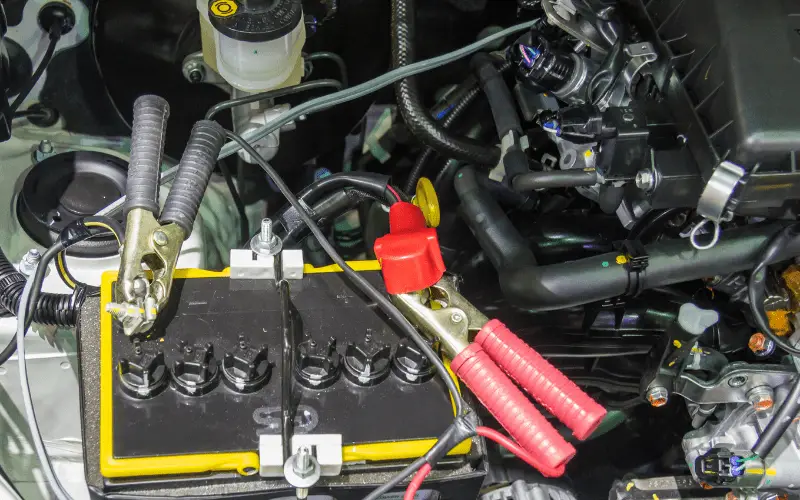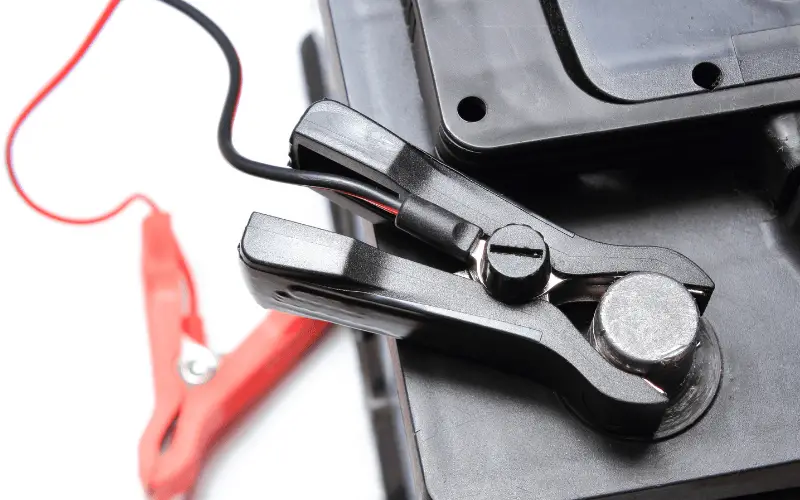Published Date: October 17, 2020
Last Updated on November 29, 2022 by camper front
RV batteries are known to be “tougher” and hold more power for a longer period of time, compared to car batteries. However, without proper maintenance and adequate charging, you might not be able to utilize the battery’s full potential.
Your charging technique also has an impact on the battery’s ability to hold a charge. Thankfully, there are faster ways to charge RV batteries and ensure that it retains their charge. You can make use of a converter, the tow vehicle’s alternator, solar power, or even wind power.
Table of Contents
Fastest Ways To Charge Rv Batteries
Before we get into all the different ways you can go about charging your travel trailer batteries, there are a few guidelines you should follow to ensure your safety and that of the battery.
Before attempting to take out your batteries, you need to Turn off your RV to avoid unexpected injury. You want to carry out the charging process in a safe location; you don’t want the area to be too wet or near any metal items
You want to disconnect the cables with utmost caution. After charging your battery fully, you want to disconnect the charger and store it appropriately.
1. Charge An RV Battery With Generator
A generator not only comes in handy for blackout periods; it can also be used to charge your batteries. It is a quick fix for those times when you thought you packed a fully charged battery only to get to the campsite to find an empty one.
Many people have come to prefer charging their batteries with a generator over other methods; it is effective and risk-free.
However, to be able to effectively charge your battery with a generator, you will need a generator with a large capacity. To use a generator for charging your batteries, here’s what you need to do.
- You want to Make sure that your generator is fully charged.
- Next, Turn on your RV battery and Select the RV battery location.
- Then Connect your battery with both positive and negative cables.
- Unplugging all electrical devices will cause your battery to charge faster.
- Now, Turn on your fully charged generator and plug your RV into it.
Then allow your battery to charge completely. Once the battery has charged fully, you can go ahead and disconnect the generator.
2. Charge Your RV Battery With A Converter

Charging your RV battery with a converter can be done in a couple of different ways, you can hook your RV to an electrical grid via a 30 or 50-amp outlet at a campground, or you can hook up to a grid at home through a 15 or 20-amp power outlet.
Every RV is equipped with 30 or 50-amp hookups, which can be powered by the electrical grid of a campsite, otherwise known as shore power.
Depending on the size of your RV, you may have a 30 or 50-amp hookup. The moment you connect your RV to shore power using the hookups, your batteries begin to charge, and you can run different appliances.
Now for the 15 amp and 20 amp outlets, you can basically hook up to shore power with a home extension cord in the same way that it is hooked up with a 30 or 50-amp plug.
You can also take out your battery from inside the RV and charge it inside your home using a 12-volt battery charger. On the other hand, if you have a small RV, you can take it inside your garage and place the 12-volt battery charger on the battery without having to remove the battery from inside the RV.
Read Also: Here’s How to Know When RV Converter is Bad
3. Charge Your RV Battery While Driving
To be able to charge your batteries while driving, you will need to own deep cycle batteries, as they have extended charge storage capacity. You can also make use of marine and automotive batteries; these batteries come with default designs to be used and applied while driving.
Here are the necessary steps you need to follow to properly charge your batteries while driving.
- First, Connect the house battery to your RV battery; you want to make sure to properly Configure the connection.
- To be able to charge your battery while driving, you will need to fully understand the charging phase; you can refer to the manufacturer’s manual for more information on your battery and follow it accordingly.
- Finally, you want to allow the battery to Take enough time to charge fully.
4. Charge the RV Battery Using DC Power
Using DC power to charge your battery saves you the stress of having to go through a converter. However, they will not allow you to run AC appliances while the charging process is ongoing.
Instead, your battery will be charged, after which it can send power through the inverter so that your AC appliances can be powered.
So basically, your battery gets to power both your AC and DC appliances while it’s being charged. However, you might not have the capacity to run all of your appliances due to limited power.
And even if running your appliances while charging your batteries is possible, it is usually not recommended.
This is because it will take a longer time for your battery to charge completely while appliances are running off their power. If you run too many appliances at the same time, your battery may not receive enough power to charge at all.
5. Use Solar Power To Charge Your RV Batteries
Using solar power to charge your batteries is a “green” way to go. Solar power basically starts with a solar panel that goes to an amp controller, which then goes to the battery. The amp controller is also known as the charge controller, and it helps to prevent the battery from overcharging.
If you plan on camping off the grid or in areas with electric outlets, then solar power might just be the way to go. In order to be able to charge your batteries efficiently with solar power, you’ll need to have a charge controller with more amps than your solar panels and battery combined.
There are two different types of charge controllers. The first type of charge controller is the pulse width modulation charge controller, also known as a PWM controller.
Then The second type of charge controller is the maximum power point tracking charge controller. It is sometimes referred to as an MPPT charge controller.
To get the right charge controller, you need to divide the watts provided by your solar panel by the number of volts in your battery bank; then, whatever figure you get, you need a charge controller that can provide more than that amount of charge.
However, the downside of making use of solar power is that there is limited time in the day to capture the sun’s rays. For winter periods, solar power might be impractical.
6. Charging Your RV Batteries Using Wind Power
Now, this is an unconventional way of charging RV batteries, but you can actually make use of wind turning to charge your batteries.
Using wind power to charge your batteries is done in the same process as with solar power. This means you will need a charge controller that is connected to the wind turbine, which then sends energy to your battery.
How Long Does It Take To Fully Charge An RV Battery?

The amount of time it would take to charge your battery totally depends on your charger and battery size because It takes less time to deplete a battery than it takes to charge it, so any time you are recharging your battery, you’ll need to have patience.
If you only have a converter, the battery may only be able to charge at 3 to 5-amps, which could take hours to fully recharge the battery. Most expensive chargers can give up to 30 amps of charging while others have over 100 amps capacity.
Read Also: Here’s How Long an RV Residential Fridge Will Run on Battery
How To Maintain Your RV Batteries
In order to prolong the life of your battery, it will need to be regularly maintained. If you take proper care of your battery, it may be able to last up to 6 years.
You want to remove the cables and clean the connections periodically to remove any corrosion or build-up. You can also make use of baking soda and water solution to scrub away any residue with a wire brush before wiping it down with a cloth.
You also want to keep an eye on the level of battery acid as well, depending on the battery type, so that it doesn’t get too low. Before you do this, you need to wear eye and skin protection to avoid getting any battery acid near sensitive areas of your body.
Before unplugging the battery cables, you want to make sure to wear gloves and remove the black cable (negative) side first before the red cable (positive side). You want to first replace the positive cable followed by the negative one, then tighten both with a wrench.
Conclusion
There are multiple fast ways to charge RV batteries, and you can take advantage of this to make use of the charging method most convenient to you.
But regardless of the charging method, you are making use of; you want to make sure you use the right charging tools to avoid damaging your batteries or even harming yourself.

